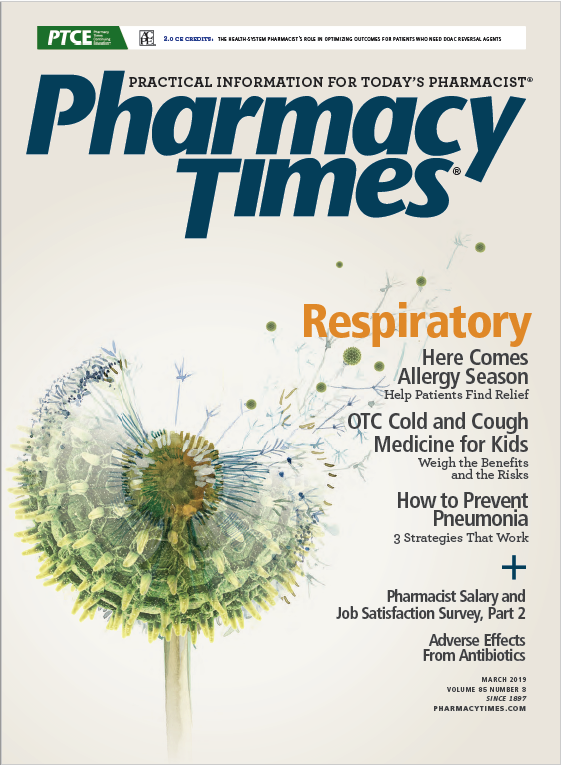Publication
Article
Pharmacy Times
Letter from the Chairman: Helping Patients Breathe Easier
Author(s):
Patients can breathe easier knowing that their local pharmacists are ideally positioned to help them manage their allegy, asthma and COPD conditions.
Spring is right around the corner, and although many individuals are looking forward to the warmer weather, those with respiratory health issues, such as allergies, asthma, and chronic obstructive pulmonary disease (COPD), may be dreading the symptom exacerbation that the change of season brings. Fortunately, these patients can breathe easier knowing that their local pharmacists are ideally positioned to help them manage their conditions.
Allergies are the sixth-leading cause of chronic illness in the United States and affect more than 50 million Americans each year, according to the CDC, with seasonal allergic reactions, such as hay fever, particularly common.1 Conditions such as asthma and COPD, also place an enormous burden on patients, with asthma alone affecting more than 26 million patients in the United States, according to the most recent data from the CDC.2
As the most accessible members of the health care team, pharmacists have a great opportunity to educate patients about how to stay healthy and counsel those in need of symptom relief about their treatment options. The results from one study, published in the Journal of Primary Care & Community Health, show that allowing pharmacists to perform spirometry tests led to an increase in referral competition, allowing patients to get the treatment they needed.3
To help pharmacists meet their patients’ health needs this spring, this issue of Pharmacy Times® contains a cover story on seasonal allergies, as well as resources on pneumonia prevention and management among older patients, blood glucose monitors, medication safety, pharmacy law, and more. Additionally, be sure to check out this month’s free continuing education activities on direct-acting oral anticoagulant reversal and safe handling of hazardous drugs.
Of course, there are many other ways in which pharmacists contribute to patient health, with their roles evolving as the health care landscape continues to change. As part of our commitment to highlighting the growing value of the pharmacist, Pharmacy Times® is once again partnering with Parata Systems to showcase the best of the pharmacy profession through our Next-Generation Pharmacist® Awards. The program, now in its 10th year, honors outstanding pharmacists, students, and technicians who strive for excellence in their practice settings and inspire others to do the same, all while advancing pharmacy as a whole. If you know exceptional individuals worthy of recognition, head over to nextgenpharmacist.com to submit a nomination.
As we approach spring, always look for new opportunities to both improve patient health and celebrate your fellow pharmacists.
References
- CDC. Allergies. cdc.gov/healthcommunication/ToolsTemplates/EntertainmentEd/Tips/Allergies.html. Updated September 15, 2017. Accessed January 10, 2019.
- CDC. Most recent asthma data. cdc.gov/asthma/most_recent_data.htm. Updated May 2018. Accessed January 10, 2019.
- Mueller LA, Valentino AS, Clark AD, Li J. Impact of a pharmacist-provided spirometry service on access to results in a primary care setting. J Prim Care Community Health. 2018;9:2150132718759213. doi: 10.1177/2150132718759213.







